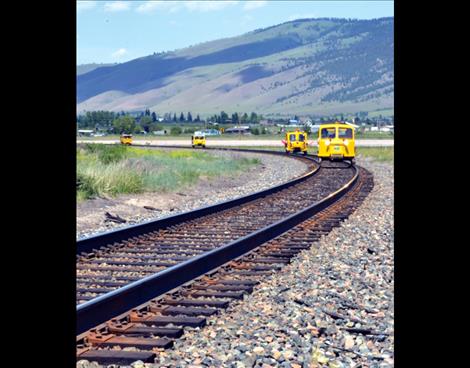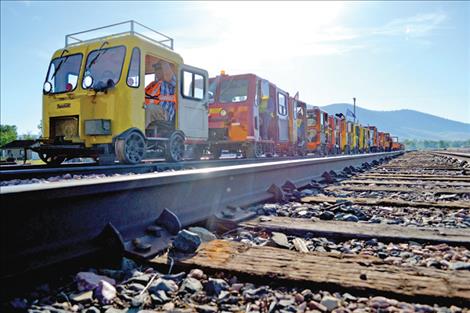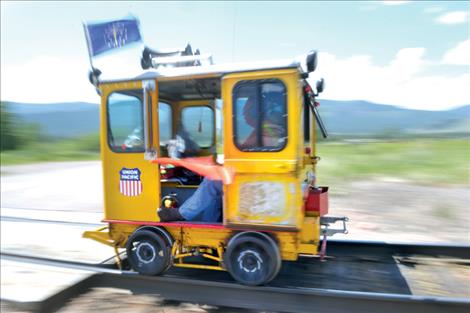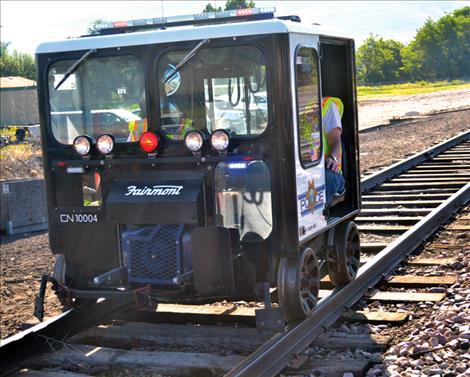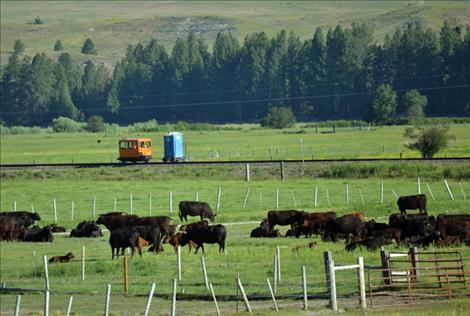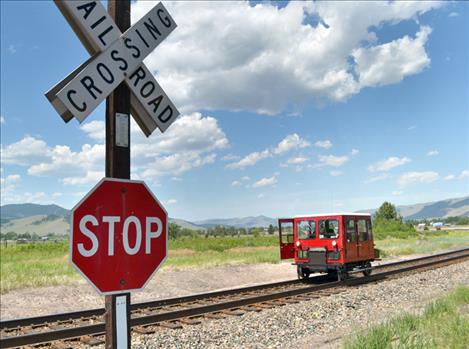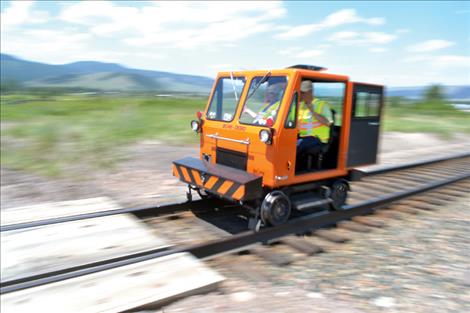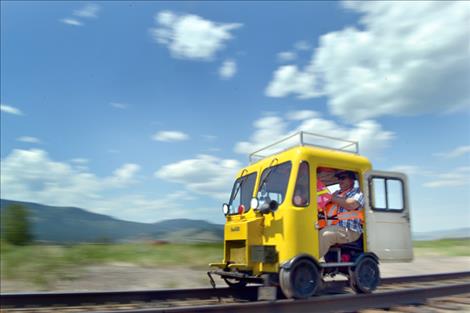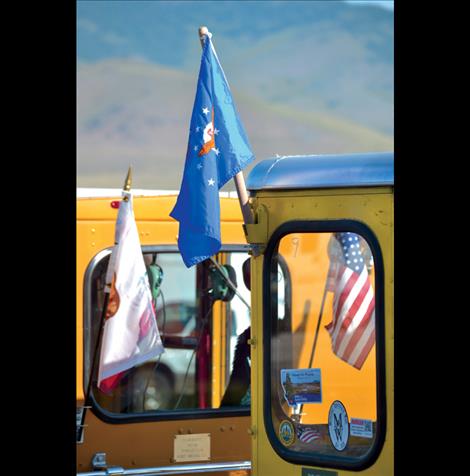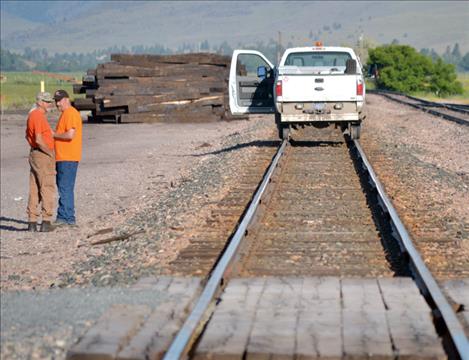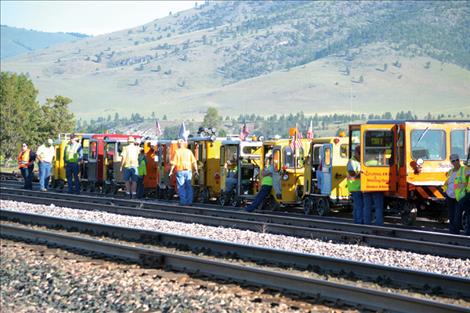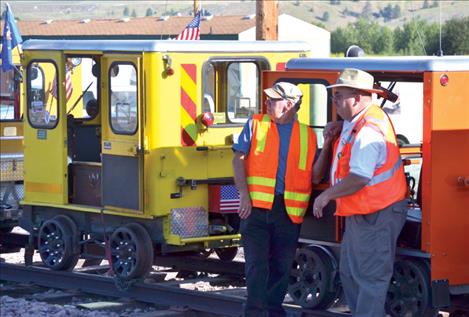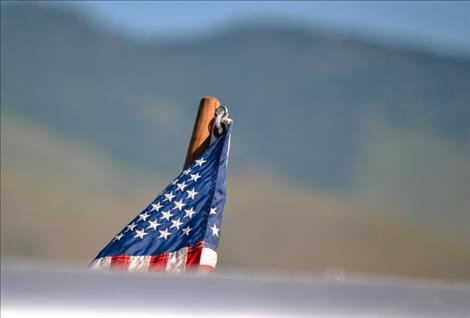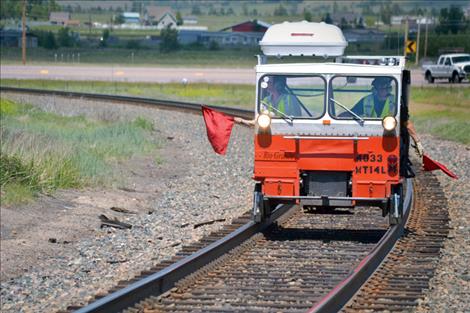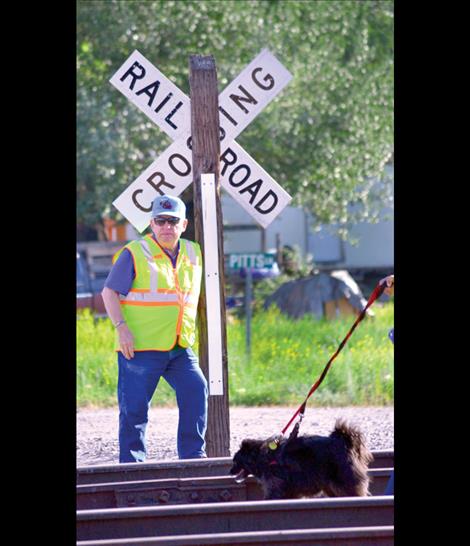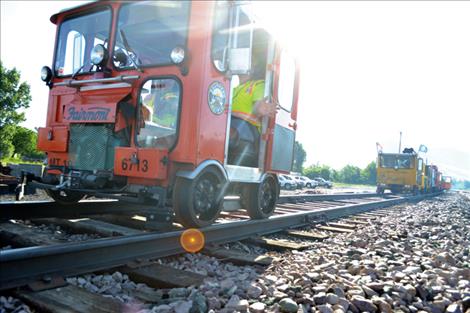RAIL RIDERS
‘Speeders’ zip through Montana on scenic tour
Hey savvy news reader! Thanks for choosing local.
You are now reading
1 of 3 free articles.
The men and women waiting to begin their tour from Dixon June 9 were mostly from a generation whose letters to Santa likely included a toy train.
“What you see here is a bunch of 18-year-olds in 60 and 70-year-old bodies,” quipped John Daniel of Washington as he waited to begin the Montana “Pines to Prairie” rail tour in “speeders,” retired railroad motor cars previously used to inspect and maintain railroad track.
The group of 31 speeders — with only four or five operators from Montana — covered 120 miles that day on Montana Rail Link in a round trip that began and ended in Dixon. Operators went west to Paradise, where each car is turned around before heading south to DeSmet and back. The trip included a crossing on the 222-foot high Marent Trestle near Evaro, a narrow 132-year-old bridge that was once the third highest trestle in the U.S.
“You are looking straight down,” Daniel said. “I had to look straight ahead.”
Missoula resident Bill Taylor, excursion coordinator for the Pines to Prairie tour, has ridden the rails from DeSmet to Paradise 10 times.
“The stuff you see, it’s incredible,” he said. “I never get tired of it.”
Railcar operators belong to several clubs that get permission from railroads to operate on their tracks. Tours are planned a year ahead and negotiated with the railroads.
Taylor appreciates the cooperation he gets from Montana Rail Link.
“They are very hospitable, and one of largest carriers that allows motor cars to use their tracks,” he said.
Operators paid $525 for the six-day Montana tour put on by the club Pacific Railcar Operators. The package included two other rail tours around central Montana. Clubs pay roughly $1 mile for a permit to rent the track, according to Taylor.
Speeders were used from the late 1950s to the late 1980s to check railroad tracks for defects. By the 1990s, the cars were replaced by Hy-Rail vehicles — standard cars or trucks with retractable guide wheels.
Although the speeders only reach speeds of about 30-35 mph, they were named such because they were much faster than their predecessors, manual hand-pumped rail cars.
Many speeders run on a 20 horsepower Onan 4-cycle engine. Some restored older motorcars use the original 2-cycle, 5-horsepower engine, aptly nicknamed a “popper” due to the noise.
The ride is hardly comfortable in a 5-foot-cube. It’s loud, it’s bumpy and it’s windy. But the lure of the rail offers adventure and exploration, and keeps hobby operators touring year after year nationwide.
Because the cars are low to the ground and offer at least 180-degree visibility, riders are privy to unique views along the tracks.
“You (see) into people’s backyards,” Daniel said with a laugh.
Cars generally tour at speeds of 15-25 mph — and never faster than the slowest car in the group — as they pass over trestles and view a world often far from the highway.
For safety reasons, operators stay close enough on the track to keep visual contact, but far enough away to stop if necessary. The general rule is to keep at a speed where it’s possible to stop in half the distance the operator can see ahead.
When speeders approach a road, each operator will honk a horn and hold a red flag out the door to warn the driver behind him that they are approaching a crossing. If they must cross a multi-laned highway, the first speeder will stop until all railcars have caught up, and a designated flagmen will wait for traffic to pass before signaling the speeders to cross.
Safety is paramount for all operators, whether they belong to PRO or other clubs under the organizational umbrella of the North American Rail Car Operators Association.
NARCOA members who want to operate motorcars must become licensed by studying the NARCOA rulebook, which prescribes procedures for safe operation and mechanical standards for maintaining the railcars. Potential operators must pass a written test on the contents of the rulebook before they are mentored on their first excursions by an experienced operator who has been designated to act as an instructor.
Only after passing these written and practical tests is a new operator allowed to operate a motorcar in a NARCOA sanctioned event. Each motorcar is inspected by a NARCOA qualified safety inspector before each excursion to be sure it meets mechanical standards.
Purchasing a rail car is an investment.
“There are number for sale,” Taylor said, “and some are better than others. You can purchase one for $2,000 if want to do sweat equity.” Rail-ready cars can run $6,000 to $8,000.
“But the expensive part is the truck, trailer, and travel,” he added.
No matter the cost, Taylor admitted the hobby is addictive.















